The bulk of conveyor ovens on the market are all arranged the same way. But sometimes specialty manufacturers can benefit from something outside the traditional gray, steel box.
This article covers a variety of conveyor oven arrangements and their pros, cons and best-fit use cases.
For a broader look at complete conveyor oven specification, check out our guide.
Horizontal, single-pass ovens are most common for good reason
At least 90% of the conveyor oven requests we receive lead us to quoting a horizontal oven. And the reasons are manifold. For one thing, most manufacturers work in a linear fashion, and horizontal ovens fit that philosophy snugly.
For another, they’re usually the simplest (read: cheapest) to build. Sure, there are complex, specialty horizontal ovens that can achieve special results, for a price. But in most cases, the most capital cost-effective way to meet a thermal processing objective is with a horizontal oven.
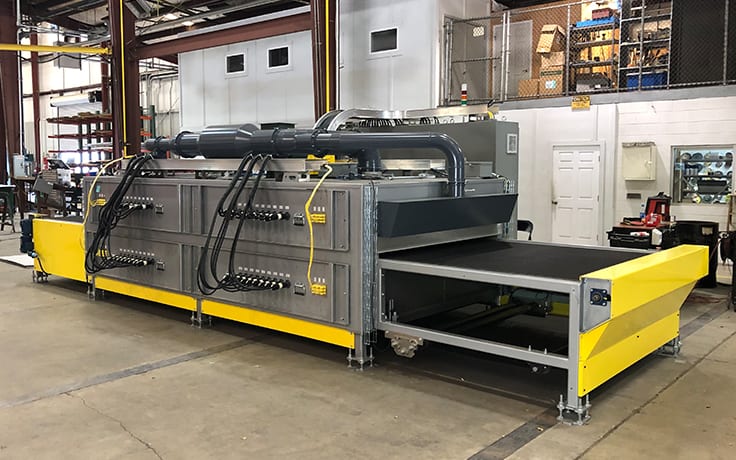
Making a turn almost never makes sense
One related arrangement that is mostly absent from our project history is a serpentine arrangement. Here, a conveyor makes one or more U-turns on the horizontal plane.
The concept makes sense as a way to increase the linear feet of the conveyor without stretching the oven to an absurd length. But there are lots of reasons why those projects tend to straighten out before they get too far in design. There’s almost always an unmanageable hurdle.
In a lot of cases, the turning radius required by the belt is too big, and the oven would take up too much space. In others, you might try to make the turn with a transfer from one conveyor to another, which adds its own set of complicated variables.
In highly automated facilities, the nail in the coffin of a serpentine proposal might be that, upon transfer between conveyors, the leading edge of the product becomes the trailing edge of the product. Turning the product itself, within the oven, adds another set of expensive complications, and before you know it, you’re over every conceivable budget.
In general, horizontal turns aren’t ideal, but they’re possible.
This indexing conveyor oven uses a transfer from one belt to another in its airlock. This one achieves multiple turns by hanging the product vertically from an overhead monorail system, instead of resting it on a traditional conveyor.
For almost every application, though, there are better ways to play Tetris with your floor space.
Vertical ovens fit long conveyors into small footprints
The most floor space-efficient conveyor oven arrangement is vertical. And it’s obvious why — they’re built up, not out. In facilities where floor space comes at a premium and ceilings are high, vertical ovens deliver a lot of value measured in throughput per square foot.
To design and build one isn’t as simple as turning a horizontal oven and facing it upwards, though.
Firstly, products need trays to hold them in place — gravity typically does that work in horizontal ovens. And when the conveyor turns, the trays need to remain level. If they tilt or tip on turns, you’re warming up for a disaster.
The multitude of sprockets and hinge points involved in vertical ovens typically leads to a higher cost. But for many, the benefit is well worth it. And because the chains that run vertical conveyors encounter less friction than horizontal belts, they wear slower and require less maintenance.
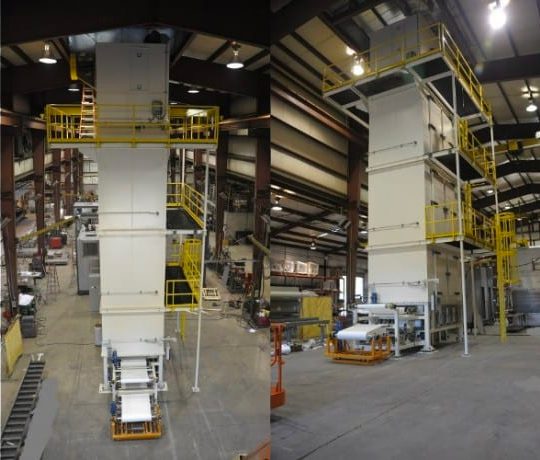
This 45-foot tall oven has hundreds of feet of conveyor in a 22-foot long footprint (We had to cut out part of our own ceiling to build it).
We’ve found that tall vertical ovens with narrow heating chambers present the greatest challenge for maintaining a consistent temperature profile throughout processing. Basic physics plays a role in this, since heat rises. Developing the right internal temp to take a product through the perfect profile over the course of multiple passes through vertical chambers requires ingenuity and experience.
For this medical tube curing oven, we met the challenge with IR heat and multiple distinct heating zones set to different temperatures. In this case (the tallest oven we’ve built), it took thoughtful design of a plenum system capable of constant, even heat through each of the three chambers.
Multi-level horizontal ovens maximize throughput for continuous processing
When processing a continuous web of product, there’s another way to maximize throughput without using an absurd amount of floor space for an oven. You can pass the web through a heating chamber at one elevation, thread it through a change in elevation at the end of the pass and snake it back towards you. Because the product is continuous, you don’t need to bother with alignment of trays, and the elevation change becomes a no-brainer.
This oven is constantly fed by extruders and fits a restricted space with three lengths of conveyor inside.
The benefits are so clear that multi-level ovens like this are all but table stakes for manufacturers processing a continuous product.
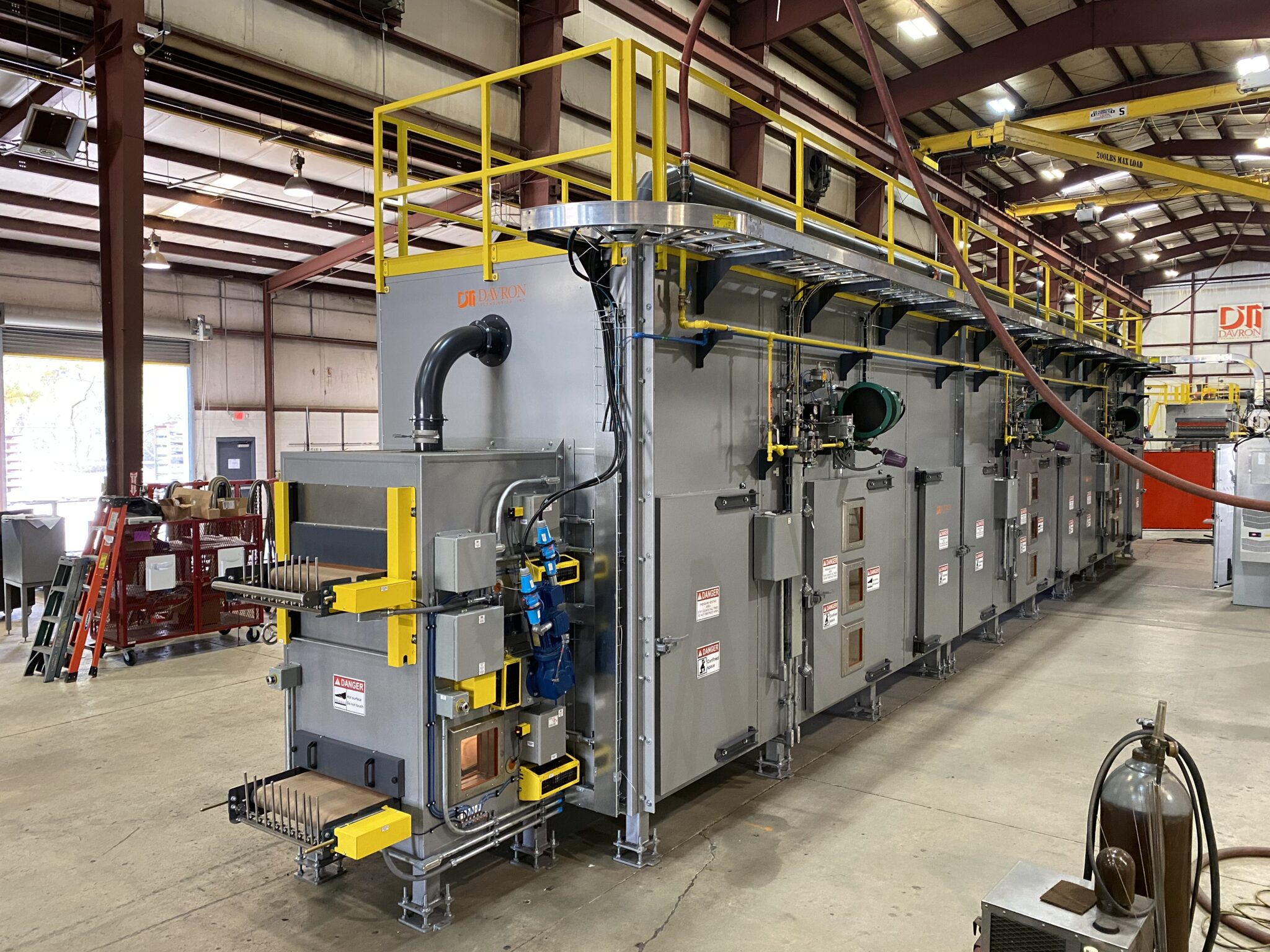
Incline/decline conveyors have two main uses
What if you want to load products at one elevation (say, a mezzanine) and unload at another? Then you will need a conveyor arranged on an incline or decline. It’s not a request we’ve received often, but it’s an achievable design when necessary.
This example collects scrap from above, dries it, and deposits it at ground level for transport to a melting furnace.
The most interesting uses of decline conveyors come from stacked horizontal ovens meant to simultaneously process multiple layers of parts separately.
Use cases for a decline conveyor within a dual oven
Some manufacturers need thermal processing of a layered product. In automotive acoustics processing, we’ve found that using a heated press to form an adhesive while shaping the product itself tends to result in delamination of the product’s layers.
So we frequently employ a different method, where two layers of the part are heated simultaneously, in distinct chambers, one on top of the other. Then, we use a decline conveyor to bring the top layer down and lay it precisely onto the bottom layer, before heading to the press.
An automotive acoustics processing line with a mindset shift — VIEW THE CASE STUDY
Spiral ovens can fit extreme conveyor lengths into small spaces, at a maintenance cost
Of all methods to maximize conveyor length in a restricted floor space, spiral ovens are the most extreme. This oven processes a high volume of small plastic components that have a long cure time, and it fits in a space-restricted Class 1 clean room. In a 20-by-10-foot box, there’s over 300 feet of conveyor, so the conveyor can move fast enough to accept a high volume of parts, while still achieving a long cure time.
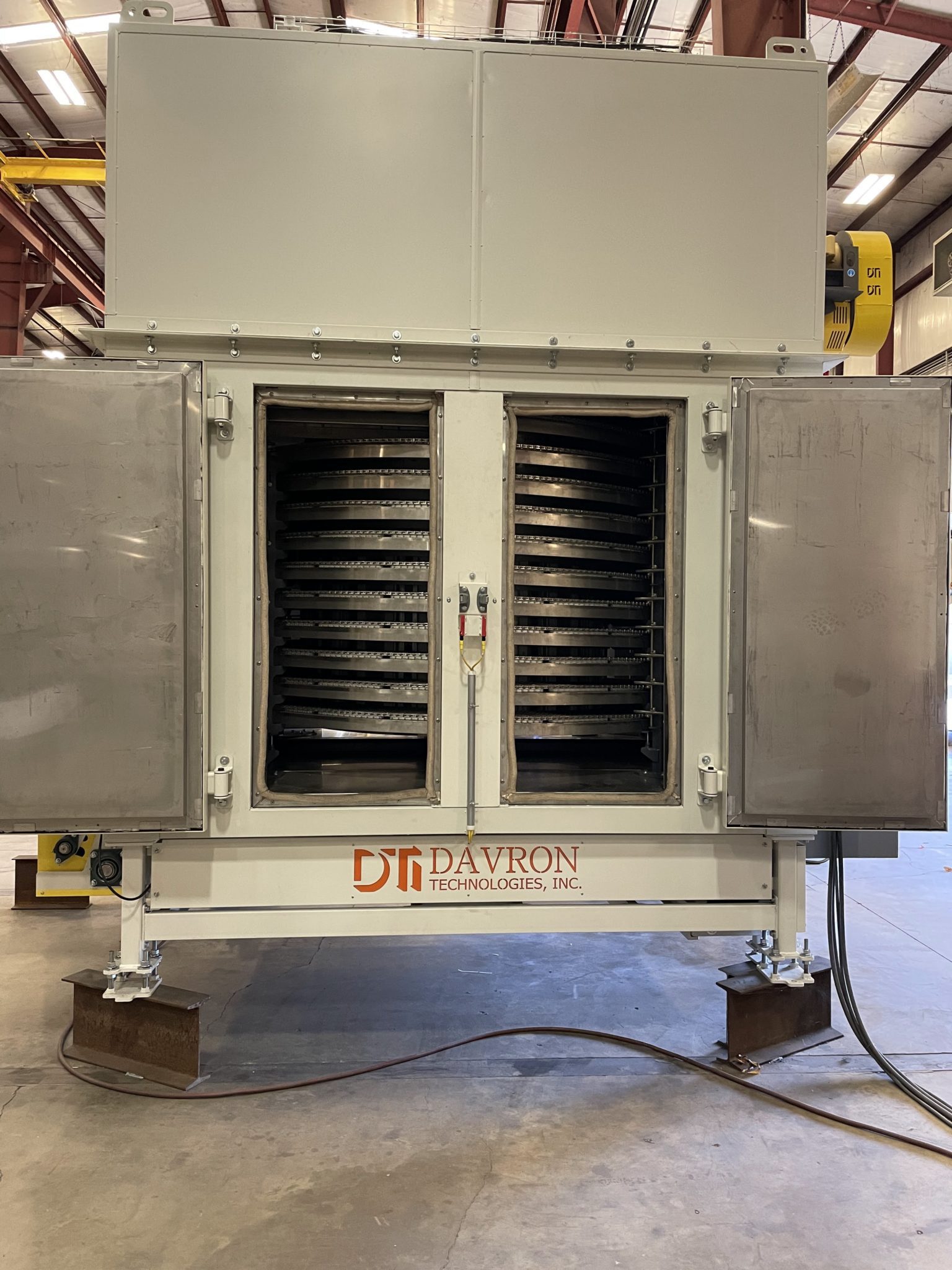
All this sounds ideal, but spiral ovens come at a significant operational cost: They wear easily and are difficult to maintain. Davron equipment designer Stephen Snyder calls them “a guaranteed maintenance item.”
They use a friction drive system, with a central drum that controls the speed and tension of the conveyor as it spirals. The chain wears on the conveyor, the drum wears on the belt, and the belt wears on the bed.
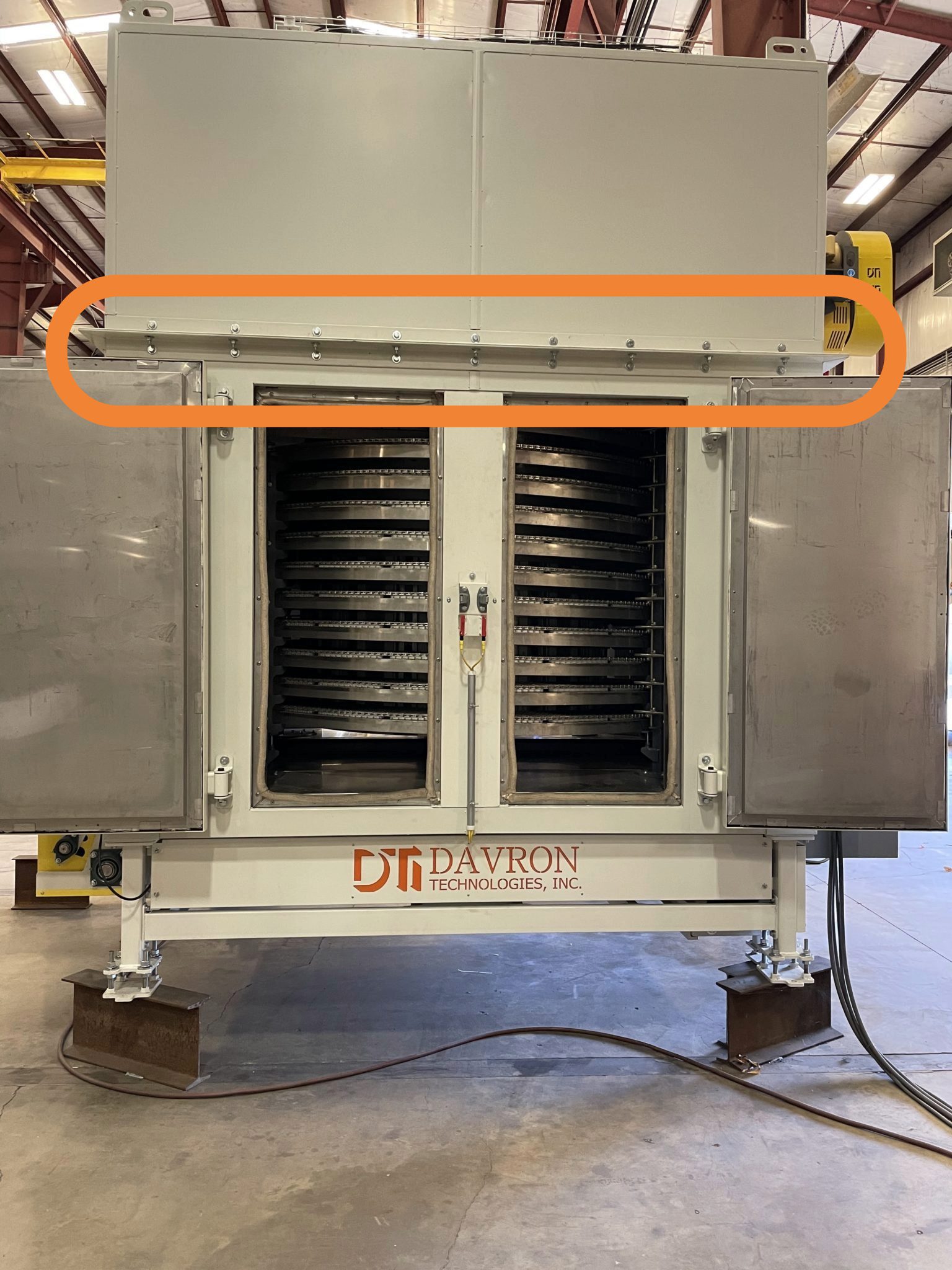
And performing maintenance is challenging. To repair or replace parts, you need to pull out the drum and/or unwind 300-and-some-change feet of conveyor. In this case, there’s a companion flange above the heating chamber holding the oven together. Undo those bolts, and you can lift the top off the oven to access the drum and conveyor from above.
Need help going from oven concept to drawing and design?
Reach out to us. We’re happy to talk through a rough concept or detailed specifications. If you need to utilize an entirely new thermal process or implement an entirely new production line, we can help.
We’ll start by making some rough drawings and, if needed, proving out a concept with pre-engineering.






